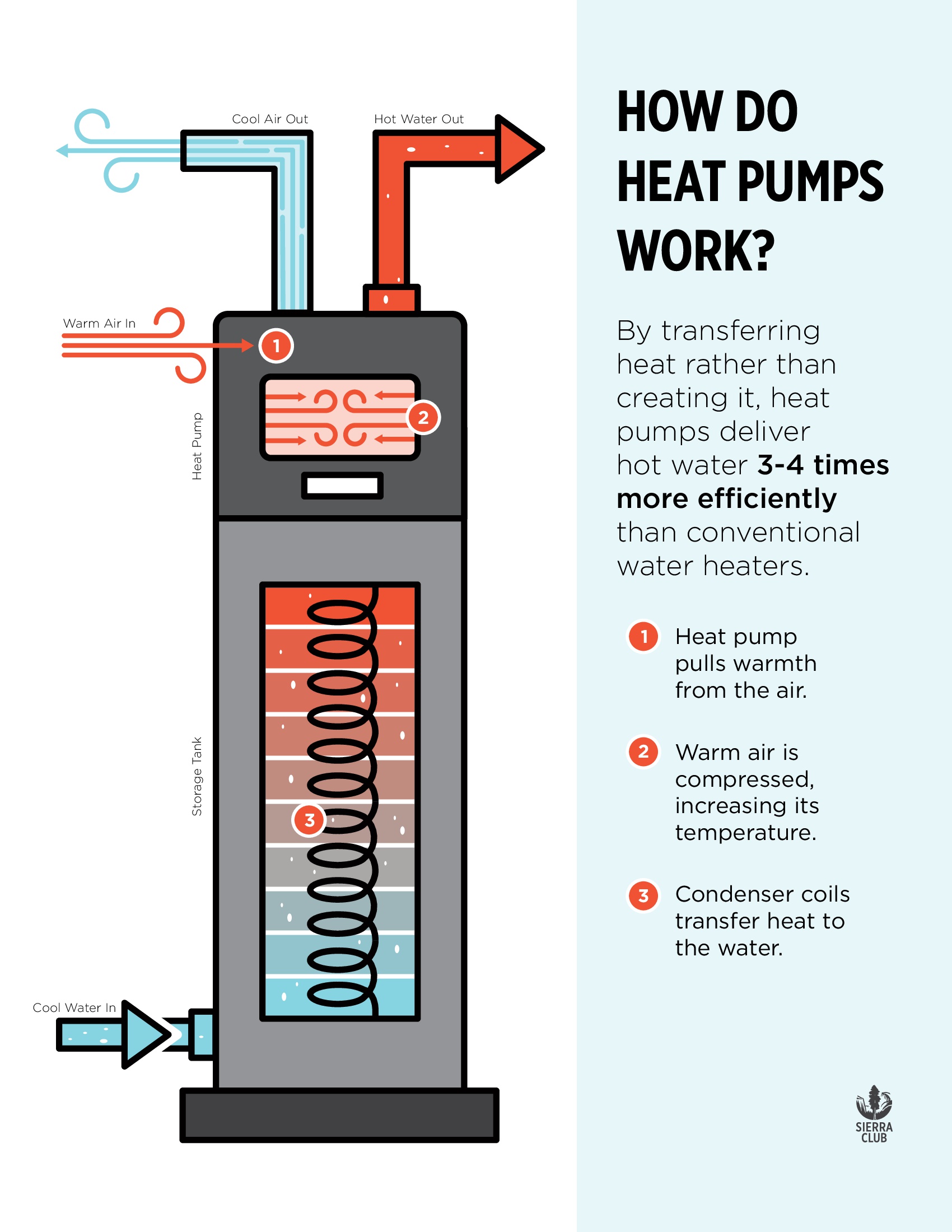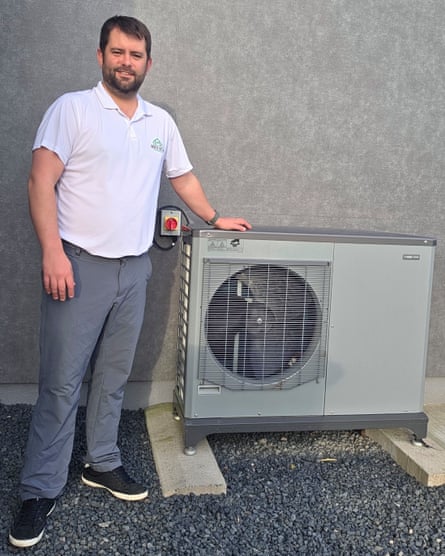
Ryan Urquhart has mastered the art of building a sustainable residence. Utilizing his expertise as a director at Baxter Design Company, a firm specializing in architectural and building consultancy, he constructed the environmentally friendly home he resides in with his wife, Jemma, and daughter, Miley, in Aberdeenshire. A critical feature of this home is the air source heat pump, which was incorporated alongside underfloor heating, mechanical ventilation, and a heat recovery system.
“Our NIBE system has proven to be dependable and efficient, ensuring we remain warm and comfortable throughout the years,” states Urquhart. “We are particularly impressed by the seamless integration of our systems, which delivers both low-carbon heating and balanced ventilation, significantly reducing our energy usage and costs.”

Urquhart belongs to the group of over a quarter of a million homeowners and small business proprietors who have recently adopted heat pump technology. Rather than relying on fossil fuels, these systems proficiently utilize electricity and the refrigeration cycle to transfer heat from the air, ground, or water into buildings.
Lord Adair Turner, chair of the Energy Transitions Commission (ETC), an international think tank, and a heat pump user himself, compares these systems to air conditioners functioning in reverse. “In many parts of the globe, the prevalent technology will be the two-way air pump, which serves as an air conditioner in summer and a heater during winter,” he remarks.
Sustainable home heating
Transitioning to an air source heat pump in a semi-detached house with an outdated, G-rated gas boiler could lead to a reduction of around 2,900kg of CO2 emissions annually, according to the Energy Saving Trust. That’s akin to making a round trip flight from Cardiff to Vancouver.
Considering that home heating contributes to 18% of the total greenhouse gas emissions in the UK, and with the country’s commitment to achieving net zero by 2050 approaching, it’s evident that a larger number of residences require these systems.
Indeed, the ETC’s latest report on attaining zero-carbon buildings posits that heating should be predominantly electrified, largely through heat pumps. As the UK continues to decarbonize its electrical grid, the quantity of saved emissions is expected to rise.
“The heat pump is capable of being a decarbonized technology because we can produce zero-carbon electricity in a manner that is not possible with a gas boiler,” Lord Turner explains.
Heat pumps also outperform gas or oil boilers in efficiency, generating three to five times the heat for every unit of electricity consumed. Nearly 100,000 units were sold across the UK in 2024 – marking a 63% surge compared to the previous year, including both subsidized and unsubsidized purchases. Nonetheless, this number falls short of the government’s goal of 600,000 installations each year by 2028.
Price remains a concern. The acquisition and installation costs for heat pumps are higher than those of gas boilers – a challenge the government aims to tackle by providing grants of £7,500 through its boiler upgrade initiative to citizens in England and Wales (with grants ranging from £7,500 to £9,000 available in Scotland). The UK’s elevated electricity costs compared to gas might have dampened sales as well.
Although high-temperature heat pumps can achieve output temperatures as high as 80C, owners of specific regular models in homes that are challenging to heat may need supplemental heating during extremely cold spells. However, it is a misconception that “perfect” insulation is required to effectively heat a residence with a heat pump.
“Many individuals will discover that a heat pump provides sufficient warmth for the vast majority of the year, even in homes with relatively poor insulation,” states Lord Turner. “There is still a compelling case for evaluating all insulation alternatives,” he continues, “but as the adage goes, don’t let the perfect become the enemy of the good.”
Heat pump owners aiding the planet
Due to the self-built nature of Urquhart’s home, he was able to integrate a variety of contemporary insulation techniques, including an insulated concrete framework (ICF). This system comprises hollow blocks or panels constructed from insulation materials that interlock to form a mold for pouring concrete.
ICF retains heat during the day and gradually releases it at night, creating an effect akin to that of an igloo. Consequently, Urquhart could install a smaller heating system than he might have otherwise needed, curbing costs during construction and lowering the family’s energy expenses to around £100 in summer. “The system also operates very quietly – becoming nearly imperceptible, even during the winter months,” he adds.
The entire endeavor drew inspiration from his father, who self-constructed the home Urquhart was raised in, and who has since been motivated to install a heat pump at his own property, located just 300 yards away.
Oliver Roberts, another user of NIBE heat pumps, residing in Shropshire, characterizes it as a “fit and forget” solution. “I don’t have to do anything to it, [there’s] straightforward integration [and] user-friendliness on the myUplink app – you can check temperatures and energy logs.”
He believes that heat pumps represent the future of heating. “They’re not something to avoid; rather, they should be welcomed … there is financial savings, ease of use, and dealer support. There’s nothing unfavorable about them.”

Sean Cooper operates two domestic heat pumps: one air source model at a home in Surrey, which replaced a gas boiler, and another water-source system at his Georgian residence near Weymouth, which extracts heat from a nearby river (it also aids in mitigating climate change by cooling the river itself).
Additionally, he has fitted an air source heat pump at his Weymouth restaurant, Catch at the Old Fish Market, which focuses on sustainable seafood and local ingredients. The installation of a heat pump within the grade-II listed Old Fish Market, a historic building by the harbor, was not without its obstacles. “The structure is very challenging to insulate due to its listed nature, but I was determined not to let that deter us from pursuing this project with pure sustainability in mind,” he notes.
A new first floor equipped with a water heating system was constructed in the building. This system is powered by a heat pump located in a mezzanine, providing optimal heat for diners. “The system’s byproduct is cold air, which is surprisingly vented onto the cooking line to keep the chefs comfortable,” Cooper explains.

Cold weather poses no obstacles to the installation of a heat pump. Emma Lewis, an art educator and part-time abstract creator, collaborated with the retrofitting firm Genous to enhance the EPC rating of her stone cottage, located “in one of Yorkshire’s most inhospitable areas.”
“As electrification progresses, we felt compelled to adopt a more sustainable approach to powering and heating our home,” she shares. “We were lucky to benefit from the grant of the boiler upgrade scheme, and with the increase from £5,000 to £7,500, we opted to replace our outdated oil boiler with a high-temperature heat pump.”
She believes everyone can play a role in enhancing the environment. “Choosing to have a heat pump seemed like a sensible decision as we sought to improve our house,” she states. “We have eliminated the largest source of our carbon emissions.”
NIBE merges intelligent technology with renewable energy to provide energy-efficient heating solutions for your home. Explore its complete range of heat pumps

